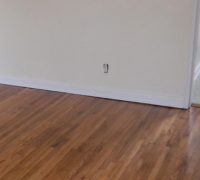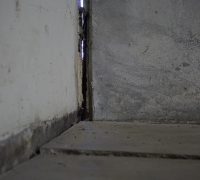Signs of Foundation Problems for Homeowners and Buyers
A faulty foundation can lead to numerous problems, especially when it comes to buying and selling a home. That is why it is extremely important to recognize the warning signs and common causes of foundation problems when looking to buy or sell a home. Check out this comprehensive guide to help both homeowners and buyers alike recognize signs of foundation problems and their common causes.
Signs of foundation problems for homeowners and buyers
Knowing the condition of your home will help you sell. If you are trying to sell a home, being upfront and honest about potential problems will help buyers trust you. Home buyers, consider that the homeowner may want to sell more than they want to be honest. Here are some signs of foundation problems to look for when buying or selling.

1. Misaligned doors and window
Is there sunlight seeping through the edges of your doors or windows? Although this could be a sign that the door is in improper fit or that the window caulking is bad, it could also be a sign of foundation problems.
2. Cracks appearing between tile or ceramic floors
The formation of cracks within a floor are not natural. Cracked tiles could be one of the signs of foundation problems. Make sure to investigate the source of the cracks in case you need a foundation crack repair.
3. Windows that are difficult to open
When windows stick or cracks appear in the glass, your home may have foundation problems. However, this damage may be the result of extreme weather and warped wood.
4. Sloping floors or staircases
Gaps beneath the floorboards or unnatural sloping floors could be an indication that a section of your home is beginning to sink lower than the rest.
5. Cracked drywall
Drywall is somewhat brittle and will quickly show signs of foundation problems, making it an excellent, early warning sign.

6. Gaps between wall seams
Sometimes cracks between wall seams are not cosmetic issues. These gaps could be the result of foundation cracks or other foundation problems.
7. Displaced or cracked moldings
Moldings are normally made of slender, long pieces of wood. This means they more easily warp or crack when under some form of bending force, like stress from a foundation crack.
8. Cracks in the exterior walls
Even a small crack from the corner of a window or running through a single brick may be small signs of larger foundation problems.
9. Water in the basement, crawl spaces, or around the perimeter
Water leaks are one of the major signs of foundation problems. They are also accompanied by other signs like puddling water around the home, water bubbles forming in paint, drywall cracks, or other foundation cracks.
10. Wall rotation
You may notice your wall is wrapped right around the time you nice the sloping floor. Both are signs that the foundation is on the move.
The common causes of foundation problems
Knowing the signs of foundation problems is a start, but it won’t help you recognize situations that commonly lead to foundation cracks. When you decide to sell or buy a home, understanding your surroundings will greatly help you determine the potential safety risks.
Trees close to the house
Trees can break a home’s foundation, although they grow slowly and seem rather harmless.
Roots have the strength to break solid concrete with time, leading to foundation cracks. They can also penetrate plumbing lines and cause sewage backup. Research root growth patterns to identify when trees may become a potential threat to a home.
Lay of the land
At the risk of being demeaning, remember this very obvious fact; water runs downhill. If a home it set on a hill or at the base of a hill, water is going to run past or under it. Excess water has several risks, especially when it comes to causing foundation problems. Water entering the home will cause damage to drywall, carpet, wood, other items, or lead to the growth of mold. Water may also erode the soil underneath the foundation, causing a home to sink.
Gain or loss of soil moisture
Soil expands and shrinks, much like a sponge, causing busted pipes, bad drainage, drought, extended periods of rain, and a shift in the water table. Changes of any kind to the soil around the foundation will carry with it an increased risk of the formation of foundation cracks.
Plumbing leaks
A plumbing leak can cause moisture change as was just described, but it has other characteristics that give it a unique set of risks. A broken pipe, besides expelling access amounts of water, will also remove the earth from under the foundation. Soil can fall into the pipe and be swept away, meaning a broken pipe is effectively excavating your foundation.
Buying or selling a home with foundation problems
When a home has foundation problems, there are many considerations that will help determine if selling or buying is practical. Consider the following 3 considerations that may help put many of your worries to rest when buying or selling a home with foundation problems.
1. Just about anything can be fixed
Unless the home has already collapsed, it can probably be repaired. There are a variety of solutions for the many foundation problems that can arise. For example, the following damages can be fixed:
- Trees: Consider a root barrier installation. A root barrier is a small, underground wall that deters roots from growing toward pipes and foundation walls, protecting a house from damage or preventing it further damages.
- Slanted floor, twisted walls, or sunken staircase: A sinking foundation does not mean the home is sunk thanks to concrete lifting. Concrete lifting can repair many foundation problems. It can correct issues with weak land grades, soft soil, or soil moisture alterations. At only 33% the price of concrete replacement, it is also a cost-effective alternative. The process is also more environmentally friendly, is quicker, and is less destructive to landscape.
- Existing foundation problems: Home foundation repair is possible. Depending on where the problem is located, a polyurethane repair (for interior problems) or a pressed pier repair (for external problems) will make a home as strong as it ever was.
2. A well-repaired home should not deter a buyer
You may be worried that a repaired foundation is not as good as a non-damaged one. However, home foundation repair is a permanent solution. Foundation crack repair will restore a home’s ability to handle the many loads it is required to support. A reputable company will also guarantee a repair and offer a warranty. A seller should offer to have a structural inspection by an engineer. With an inspection and warranty, there is little reason to pass up a home.
3. You can flip a house for profit
A home with signs of foundation problems can be purchased at a reduced cost. As soon as the foundation cracks are repaired, the value of the home increases. As property value and inflation drive up home prices, your foundation-damaged home can become the foundation of a decent long-term investment.
GET IN TOUCH WITH US FOR MORE INFORMATION










